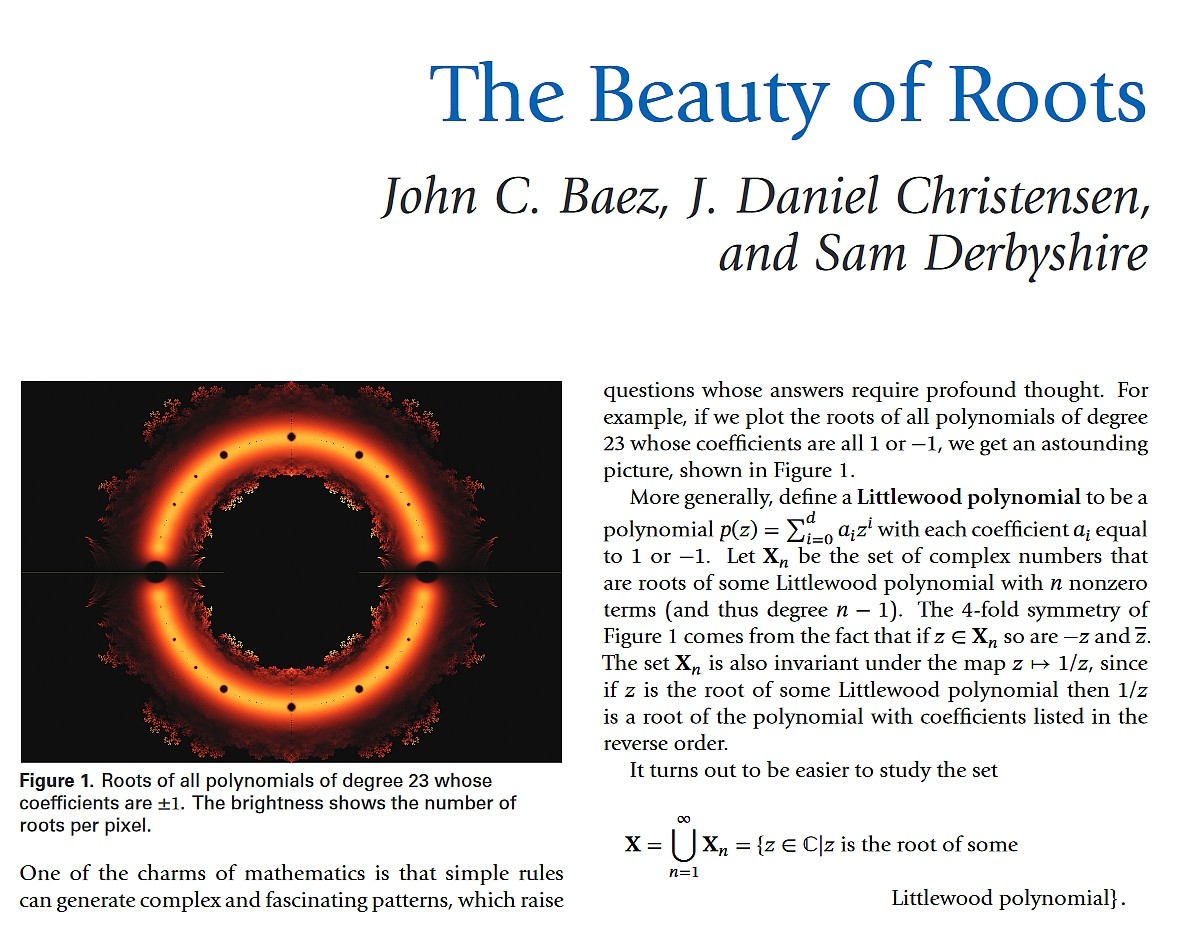John Carlos Baez on Nostr: If you draw all roots of all polynomials whose coefficients are ±1, you get an ...
If you draw all roots of all polynomials whose coefficients are ±1, you get an amazing picture that raises lots of challenging puzzles!
I really hope someone reads our short article:
https://www.ams.org/journals/notices/202309/rnoti-p1495.pdfand solves the main puzzle: why do the fractal regions of this set look so much like "dragon sets"? We have a good heuristic explanation, but no proof yet.
Read on for a bit more about this:
(1/2)

Published at
2023-09-30 11:40:13Event JSON
{
"id": "d37cdc909a0f67453d7f1df7ca177cfda50f92debf56b80d8cde1ec53fac5f6f",
"pubkey": "f7346eb283902ada9d21c109a93e83128d9f87d8fcfe70ad819b3bf2ad9bce16",
"created_at": 1696074013,
"kind": 1,
"tags": [
[
"proxy",
"https://mathstodon.xyz/users/johncarlosbaez/statuses/111153906567539374",
"activitypub"
]
],
"content": "If you draw all roots of all polynomials whose coefficients are ±1, you get an amazing picture that raises lots of challenging puzzles!\n\nI really hope someone reads our short article:\n\nhttps://www.ams.org/journals/notices/202309/rnoti-p1495.pdf\n\nand solves the main puzzle: why do the fractal regions of this set look so much like \"dragon sets\"? We have a good heuristic explanation, but no proof yet. \n\nRead on for a bit more about this:\n\n(1/2)\n\nhttps://media.mathstodon.xyz/media_attachments/files/111/153/875/818/969/329/original/b538457645986dd7.jpg",
"sig": "97c82e0da04ddc99e4fab6a410367a79c12a6233051e2f7db64e7f8095753f24fdd7cf124c99267cab5b377633d40aa96dd69fa23486c2cd97db5bb508788762"
}
